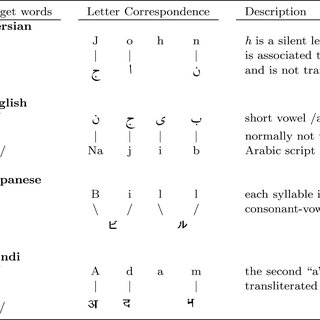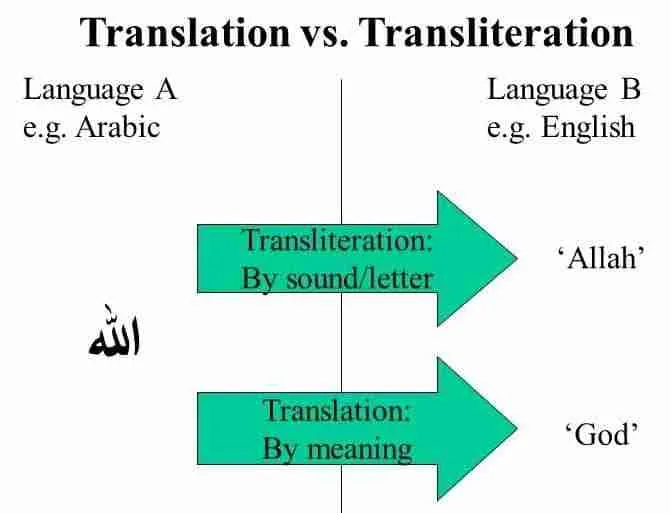
In our increasingly globalized world, Transliteration communication across linguistic boundaries has become more prevalent than ever. As we interact with people from different cultures and regions, we encounter various languages and writing systems that may be unfamiliar to us. In such instances, transliteration serves as a valuable tool for bridging language barriers, enabling us to convert text from one script to another while preserving its phonetic pronunciation. In this blog post, we’ll explore the concept of transliteration, its importance in facilitating cross-cultural communication, and its applications in diverse fields.
What is Transliteration?
Transliteration refers to the process of converting text from one writing system or script into another based on its phonetic pronunciation. Unlike translation, which involves conveying the meaning of words or phrases from one language to another, transliteration focuses on representing the sounds of words using the characters of a different script. This allows speakers of different languages to approximate the pronunciation of foreign words or names more accurately, even if they are unfamiliar with the original script.
For example, consider the name “महात्मा गांधी” in the Devanagari script used for Hindi. Transliterating it into the Latin script commonly used in English yields “Mahatma Gandhi,” providing an approximation of its pronunciation for English speakers.
Transliteration is particularly useful when dealing with languages that use non-Latin scripts, such as Arabic, Cyrillic, or Chinese. By converting text into a script that is more familiar to the reader, transliteration enhances accessibility and understanding, especially in contexts like personal names, place names, and technical terms.
Importance of Transliteration in Cross-Cultural Communication
Transliteration plays a vital role in facilitating cross-cultural communication and fostering understanding between speakers of different languages. Here are some key reasons why transliteration is important:
- Preservation of Pronunciation: In many cases, words or names from foreign languages may be challenging to pronounce correctly for speakers unfamiliar with the original script. Transliteration helps to preserve the pronunciation of such words by representing them phonetically in a script that is more familiar to the reader.
- Enhanced Accessibility: Transliteration makes content more accessible to a broader audience by enabling readers to understand and pronounce foreign words or names more easily. This is particularly valuable in multicultural societies, international business dealings, and academic research where encountering unfamiliar languages is common.
- Cultural Exchange: By facilitating the exchange of ideas, information, and cultural expressions across linguistic boundaries, transliteration promotes cultural understanding and appreciation. It allows individuals to engage with texts, names, and concepts from different cultures without being hindered by linguistic barriers.
- Standardization: In some cases, transliteration serves as a means of standardizing the representation of foreign words or names across different contexts and languages. By adopting consistent transliteration schemes, organizations, governments, and academic institutions can ensure clarity and consistency in communication.
Applications of Transliteration
Transliteration finds applications in various fields and domains, catering to diverse linguistic and cultural needs. Some common applications include:
- Personal Names: Transliterating personal names from one script to another is essential for international communication, travel documentation, and administrative purposes. For example, passport agencies and immigration authorities often transliterate names into the Latin script for official documents and records.
- Place Names: Transliteration of place names allows travelers, researchers, and mapmakers to identify and navigate locations with ease. It ensures consistency in geographical references across different languages and helps preserve the cultural heritage associated with specific places.
- Technical Terminology: In scientific, technical, and academic contexts, transliteration is used to represent specialized terminology and jargon from different languages. This facilitates cross-disciplinary collaboration, knowledge sharing, and academic research in fields such as medicine, engineering, and linguistics.
- Business and Marketing: Transliteration plays a crucial role in international business and marketing by enabling companies to adapt their branding, product names, and advertising slogans for foreign markets. By transliterating brand names and product labels into local scripts, businesses can connect with consumers and establish a presence in diverse linguistic and cultural contexts.
- Digital Communication: With the proliferation of digital communication platforms and social media networks, transliteration has become increasingly relevant in online interactions. Transliteration tools and input methods allow users to type or convert text in one script into another, facilitating communication across languages on digital platforms.
Challenges and Considerations

While transliteration offers numerous benefits, it also presents certain challenges and considerations:
- Ambiguity: Transliteration schemes may vary depending on factors such as language, region, and context, leading to ambiguity and inconsistencies in representing sounds and characters. Standardization efforts and the use of phonetic guidelines can help mitigate these challenges.
- Loss of Meaning: Unlike translation, which focuses on conveying the meaning of words or phrases, transliteration primarily deals with phonetic representation, which may result in a loss of semantic information. It is essential to use transliteration judiciously and in conjunction with other language tools to ensure accurate communication.
- Cultural Sensitivity: Transliteration should be approached with cultural sensitivity and respect for linguistic diversity. Care should be taken to preserve the integrity and authenticity of names, terms, and cultural expressions, avoiding misinterpretation or distortion in the transliteration process.
- Technology Limitations: While transliteration tools and software have improved in recent years, they may still face limitations in accurately capturing phonetic nuances and dialectical variations. Human expertise and linguistic knowledge are often necessary to achieve accurate transliteration, especially in complex or specialized contexts.
Conclusion
In conclusion, transliteration serves as a valuable tool for bridging language barriers and facilitating cross-cultural communication in our diverse and interconnected world. By converting text from one script to another based on its phonetic pronunciation, transliteration enhances accessibility, preserves pronunciation, and promotes cultural exchange.
From personal names and place names to technical terminology and digital communication, transliteration finds applications in various fields and domains, catering to diverse linguistic and cultural needs. While transliteration presents certain challenges and considerations, its benefits in promoting understanding and appreciation of linguistic diversity far outweigh its limitations. As we continue to engage with languages and cultures from around the world, transliteration will remain a vital component of effective communication and cross-cultural exchange.

From educational materials and historical texts to travel guides and legal documents, transliteration finds applications in diverse fields and domains, enriching communication and facilitating collaboration across linguistic boundaries. While transliteration presents certain challenges and considerations, its benefits in promoting accessibility, preserving cultural heritage, and fostering global understanding far outweigh its limitations.
As we continue to engage with languages and cultures from around the world, transliteration will remain a vital tool for breaking down barriers, building bridges, and celebrating the richness and diversity of human expression. By harnessing the power of transliteration, we can create a more inclusive, interconnected, and harmonious global community.

 Afrikaans
Afrikaans Albanian
Albanian Amharic
Amharic Arabic
Arabic Armenian
Armenian Azerbaijani
Azerbaijani Basque
Basque Belarusian
Belarusian Bengali
Bengali Bosnian
Bosnian Bulgarian
Bulgarian Catalan
Catalan Cebuano
Cebuano Chichewa
Chichewa Chinese (Simplified)
Chinese (Simplified) Chinese (Traditional)
Chinese (Traditional) Corsican
Corsican Croatian
Croatian Czech
Czech Danish
Danish Dutch
Dutch English
English Esperanto
Esperanto Estonian
Estonian Filipino
Filipino Finnish
Finnish French
French Frisian
Frisian Galician
Galician Georgian
Georgian German
German Greek
Greek Gujarati
Gujarati Haitian Creole
Haitian Creole Hausa
Hausa Hawaiian
Hawaiian Hebrew
Hebrew Hindi
Hindi Hmong
Hmong Hungarian
Hungarian Icelandic
Icelandic Igbo
Igbo Indonesian
Indonesian Irish
Irish Italian
Italian Japanese
Japanese Javanese
Javanese Kannada
Kannada Kazakh
Kazakh Khmer
Khmer Korean
Korean Kurdish (Kurmanji)
Kurdish (Kurmanji) Kyrgyz
Kyrgyz Lao
Lao Latin
Latin Latvian
Latvian Lithuanian
Lithuanian Luxembourgish
Luxembourgish Macedonian
Macedonian Malagasy
Malagasy Malay
Malay Malayalam
Malayalam Maltese
Maltese Maori
Maori Marathi
Marathi Mongolian
Mongolian Myanmar (Burmese)
Myanmar (Burmese) Nepali
Nepali Norwegian
Norwegian Pashto
Pashto Persian
Persian Portuguese
Portuguese Punjabi
Punjabi Romanian
Romanian Russian
Russian Polish
Polish Samoan
Samoan Scottish Gaelic
Scottish Gaelic Serbian
Serbian Sesotho
Sesotho Shona
Shona Sindhi
Sindhi Sinhala
Sinhala Slovak
Slovak Slovenian
Slovenian Somali
Somali Spanish
Spanish Sundanese
Sundanese Swahili
Swahili Swedish
Swedish Tamil
Tamil Tajik
Tajik Telugu
Telugu Turkish
Turkish Ukrainian
Ukrainian Urdu
Urdu Uzbek
Uzbek Thai
Thai Vietnamese
Vietnamese Welsh
Welsh Xhosa
Xhosa Yiddish
Yiddish Yoruba
Yoruba Zulu
Zulu